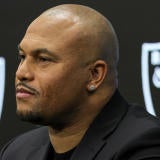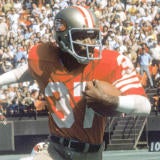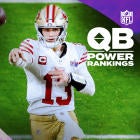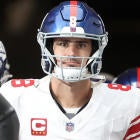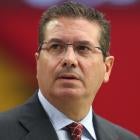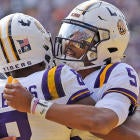The Jacksonville Jaguars and Oakland Raiders, who had the most salary cap room in 2015, are again the leaders for the upcoming league year, which begins on March 9.
Both teams were aggressive in free agency last year with different results. Making a splash by signing Julius Thomas, who became the NFL's second-highest-paid tight end on a five-year, $46 million contract containing $24 million in guarantees, didn't help Jacksonville's record much. The Jaguars won five games in 2015 as opposed to three in 2014 and have a top-five pick in the NFL draft for the fifth straight year.
The Raiders couldn't land any of the big-name free agents but their signings -- which included wide receiver Michael Crabtree, defensive tackle Dan Williams and center Rodney Hudson, who briefly became the NFL's highest paid center with a five-year, $44.5 million contract -- helped the Raiders improve to 7-9 in 2015, which equals their win total from the previous two seasons combined.
Jacksonville and Oakland still need to spend money because they are in danger of being under the minimum spending thresholds in the Collective Bargaining Agreement (CBA). Each team is required to spend 89 percent of the salary cap in cash over four-year periods of 2013 through 2016 and 2017 through 2020.
Jacksonville is at 87.04 percent spending through the first three years of the period, according to NFLPA data. Oakland's spending is 87.94 percent through 2015, based on this data.
Each team's actual salary cap (known as adjusted salary cap) usually is different from the NFL's set amount, because unused cap room can be carried over from one year to the next, and other adjustments can further increase or decrease cap space. Teams rarely carry over less than the full amount of the surplus. This fundamental change from the previous CBA allowing carryover has led to more teams annually having an abundance of cap room. The Jaguars ($32.77 million), Tennessee Titans ($20.78 million) and Cleveland Browns ($20.73 million) are carrying over the most unused cap room from the 2015 league year.
Salary cap accounting is different during the offseason than in the regular season. Only the top 51 cap numbers count on the cap until the start of the regular season. In addition to players under contract to a team, the top 51 includes any franchise, transition, restricted free agent and exclusive rights tenders for unsigned players once the tender has been made.
NFL teams were informed at a December league meeting that the 2016 salary cap is preliminarily projected to be between $150 million and $153.4 million. When the 2016 salary cap is set in late February or early March, the expectation is for it to be at the high end of projections if not over the preliminary numbers like in the last two years. NFL Media's Rand Getlin has reported that the salary cap will be at least $155 million.
Here's a look at the five teams projected to have over $50 million of cap space for the upcoming league year, assuming the salary cap comes in at $153.4 million. Most projections of cap room usually only include carryover amounts.
These projections take the following things into account to give a more complete picture:
- The fourth-year proven performance escalators earned by third-through-seventh-round picks under the 2011 CBA's rookie wage scale
- Tenders for restricted free agents and exclusive rights players with expiring contracts
- Salary cap charges relating to voidable contract years
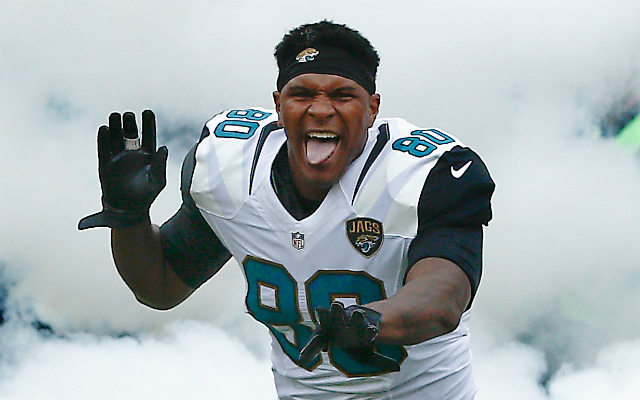
1. Jacksonville Jaguars
Projected salary cap room: $74.835 million
The Jaguars have the ability to increase their cap room to over $87 million by cutting offensive guard Zane Beadles, 34-year-old defensive end Chris Clemons and running back Toby Gerhart. A pay cut may be more of an option for Beadles, who is scheduled to make $5.5 million in 2016, than Clemons or Gerhart.
Outside linebacker Dan Skuta will probably be back with the Jaguars next season despite rumors that he will be released. $3.5 million of his $3.6 million 2016 base salary became fully guaranteed on Feb. 12.
Head coach Gus Bradley, who was given a one-year contract extension running through the 2017 season despite a 12-36 record in his three years with the Jaguars, and general manager David Caldwell will be on the hot seat without drastic improvement next season. Owner Shad Khan expects a winning record.
Fixing a porous defense will be Jacksonville's top priority. The Jaguars were 31st in the NFL in scoring defense. The 448 points allowed were the second most in franchise history. The Jaguars were also 29th in pass defense and tied for 26th with only nine interceptions.
Unfortunately for the Jaguars and the other teams with the most cap space, the best players with expiring contracts, such as Denver Broncos outside linebacker Von Miller, Carolina Panthers cornerback Josh Norman and New York Jets defensive end Muhammad Wilkerson, are expected to be effectively taken off the market with franchise tags.
Finding free safety help will likely be part of Caldwell's agenda again. The Jaguars made a strong push to sign Devin McCourty in free agency last year. He took a slight hometown discount to remain with the New England Patriots on a five-year, $47.5 million deal, which made him the NFL's second-highest-paid safety, containing $28.5 million in guarantees. Eric Berry could be an option in that same salary neighborhood if the Kansas City Chiefs don't franchise him.
Another possibility who's entering the prime of his career is Tashaun Gipson. He shouldn't command the type of money McCourty did after a down 2015 season with the Cleveland Browns where he was slowed by a high ankle sprain. Nonetheless, the 2014 Pro Bowler is tied for the fourth-most interceptions in the NFL since the start of the 2013 season with 13, despite missing eight games during that span.
Jacksonville's pass rush should get a boost with 2015 third-overall pick Dante Fowler's return from his left knee ACL tear, which occurred during the first practice of rookie minicamp. Since Fowler is an unproven commodity, improving the pass rush can't fall strictly on him.
It wouldn't be a surprise if the Jaguars continued their trend of reuniting head coach Gus Bradley with the players he had as defensive coordinator of the Seattle Seahawks. Outside linebacker Bruce Irvin will likely price himself out of the Pacific Northwest if the five-year, $46.25 million deal defensive end Vinny Curry recently signed with the Philadelphia Eagles to pass up free agency is an important data point to him.
None of Jacksonville's eight unrestricted free agents (UFA), which include punter Bryan Anger, backup quarterback Chad Henne, tight end Marcedes Lewis and center Stefan Wisniewski, are indispensable. The Jaguars signed center Alex Mack to a five-year, $42 million offer sheet in 2014 that was quickly matched by the Cleveland Browns. Making another run at Mack is anticipated, provided he voids the final three years (worth $24 million) of his deal as expected.
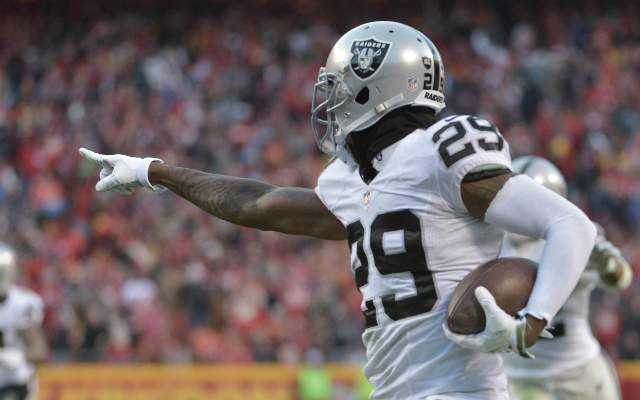
2. Oakland Raiders
Projected salary cap room: $65.428 million
Striking out while trying to hit a home run in free agency last year shouldn't prevent the Raiders from swinging for the fences again in the open market. Taking a step forward may make Oakland a more attractive destination for marquee free agents.
The secondary should be a focus of general manager Reggie McKenzie. Cornerback David Amerson was a pleasant surprise as an early-season waiver wire pickup, but 2013 first-round pick D.J. Hayden continues to be a disappointment.
Weakening division rivals could be sound strategy. Kansas City Chiefs cornerback Sean Smith might be an intriguing possibility. Six-foot-three press coverage cornerbacks weighing 216 pounds are a rarity. He will likely target a deal that exceeds the $10.5 million per year (with $25 million guaranteed) Byron Maxwell received from the Eagles in free agency last year.
Eric Weddle, who has worn out his welcome with the San Diego Chargers, could be a viable option to replace the retiring Charles Woodson. Although Weddle is 31 years old, it's hard to imagine him being interested in a deal less than the $8 million per year in his expiring contract that was signed five years ago.
The Raiders could be in the market for another pass rusher because of linebacker Aldon Smith's year-long suspension that runs through the middle of November. Irvin could also be on Oakland's radar screen since defensive coordinator Ken Norton, Jr. was his position coach for three years in Seattle. Chris Long, son of Raider great Howie Long, might be another possibility if he is released by the Los Angeles Rams. He is scheduled to make $11.75 million with the Rams in 2016.
The Raiders have 11 UFAs, including key contributors such as punter Marquette King and left tackle Donald Penn. Using a franchise tag on King for approximately $4.5 million may not be out of the question since the Raiders have so much cap room. Penn, 32, has expressed a desire to return. Another two-year deal worth more than his $10.4 million expiring contract seems appropriate. Instead, the Raiders could purse a young tackle in his prime, like the Buffalo Bills' Cordy Glenn, assuming he is allowed to become a UFA. The franchise tag candidate's salary floor was set by Lane Johnson's recent five-year, $56.25 million extension (worth up to $60 million through salary escalators) with the Eagles containing $35.5 million in guarantees. Johnson is a right tackle, a position paid considerably less than left tackles, who is expected to eventually switch to the other side of the offensive line.
The Raiders should continue extending the contracts of key players prior to reaching free agency. Running back Latavius Murray, who is entering his contract year, is the most logical candidate. The deals Doug Martin and Lamar Miller sign as free agents should help define Murray's market.
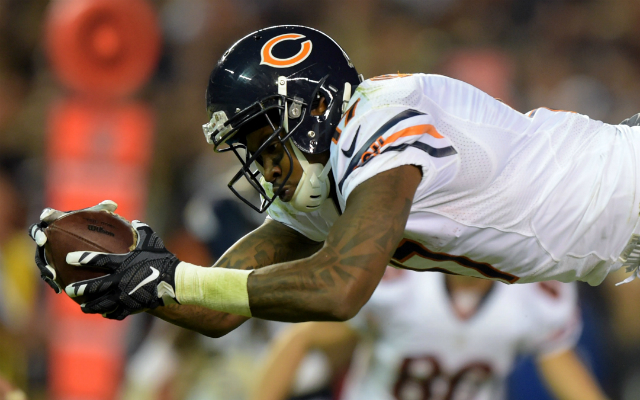
3. Chicago Bears
Projected salary cap room: $59.653 million
Chicago was among the leaders in dead money, cap charges for players no longer on the roster, for 2015 because of a regime change where the existing personnel wasn't a good match under general manager Ryan Pace and head coach John Fox. Left tackle Jermon Bushrod, who lost his place in the starting lineup, fits the description this offseason. The Bears have $4.4 million in dead money because of his release.
The roster will continue to be remade to better fit the two men's vision. Pace has suggested that he isn't going to make splash signings in free agency but rather use it to supplement building through the draft.
Letting wide receiver Alshon Jeffery hit the open market would be a mistake, considering first-round pick Kevin White, who missed the entire 2015 season with a shin injury, is an unknown quantity. Using a franchise tag on Jeffery for approximately $14.5 million would buy the Bears more time to decide whether to make him one of the NFL's highest-paid wide receivers after nagging leg injuries limited him to nine games in 2015.
The Bears have 17 other players headed to unrestricted free agency. Two-time Pro Bowl running back Matt Forte will be not be back.
The other UFAs are more luxuries than necessities. Tight end Zach Miller is a prime candidate to be re-signed after a career-high 34 receptions and with the uncertainty surrounding Martellus Bennett, who could be on trading block because of Miller's emergence and unhappiness with his contract. Bennett has one year remaining for $5.185 million.
Familiarity brings comfort, so Fox might want to reunite with some of his former players on the Super Bowl 50 champion Broncos. Defensive end Malik Jackson's asking price might be too rich for Pace's blood, since his salary floor should be the $10.25 million per year Mike Daniels and Corey Liuget received on their extensions with the Green Bay Packers and San Diego Chargers, respectively. It may make sense for the Bears to consider making a run at restricted free agent linebacker Brandon Marshall with a difficult-to-match front-loaded offer sheet if he isn't given a first-round tender. Adding left tackle Ryan Clady may be a possibility since he could be a cap casualty.
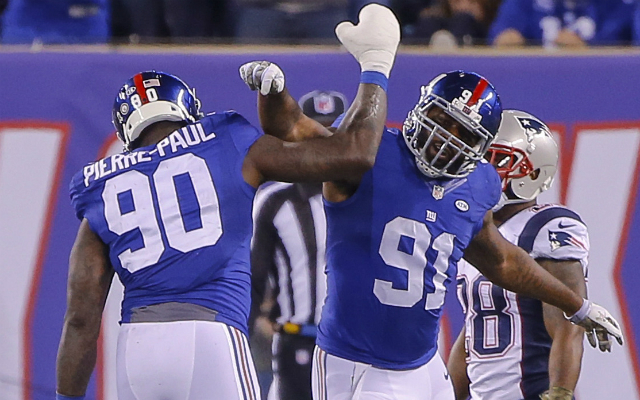
4. New York Giants
Projected salary cap room: $56.15 million
The Giants created almost $12 million of cap space by releasing offensive tackle William Beatty, and offensive guard Geoff Schwartz and middle linebacker Jon Beason, who announced his retirement. Another $6.1 million of cap room can be gained by releasing wide receiver Victor Cruz, who hasn't played since tearing the patellar tendon in his right knee six games into the 2014 season, as a calf injury cost him the 2015 season. The better move would be getting Cruz to agree to some sort of pay cut from his $7.9 million base salary where he can make back the lost money through incentives.
The Giants need to overhaul the defense after ranking last in the NFL in total defense and against the pass. Improving the pass rush should be at the top of the offseason to-do list. Defensive ends Jason Pierre-Paul and Robert Ayers are two of the team's 20 UFAs. Pierre-Paul is hard to value because of the Fourth of July fireworks accident that resulted in the amputation of his right index finger and injuries to other parts of his hand, which caused him to miss half of the season. He may still want to be paid like an elite pass rusher despite his damaged hand limiting his effectiveness. Ayers, who had a career high 9.5 sacks last season, should be much more affordable than Pierre-Paul.
Defensive end Olivier Vernon could be a target, provided the Miami Dolphins don't franchise him. His 81 quarterback pressures (combined sacks, quarterback hurries and quarterback hits) were fifth in the NFL, according Pro Football Focus. Vernon reportedly intended to use the maximum value of Cameron Jordan's five-year extension with the Saints, which averages $12 million per year including incentives and contains $33.469 million in guarantees, as a salary floor for a new deal before his strong 2015 season. Mario Williams could be another option once he is released from the Bills. He might be looking for a deal that's comparable to the $14.7 million per year he was scheduled to make in the final two years of his Buffalo contract. Irvin should be cheaper than either Vernon or Williams.
The Giants shouldn't expect to re-sign cornerback Prince Amukamara for less than the $39 million maximum value ($7.8 million per year) of Dominique Rodgers-Cromartie's five-year contract signed in 2014. His asking price is reportedly $10 million per year. If Giants aren't comfortable making such a large financial commitment to Amukamara because he has missed 25 games in five NFL seasons, the Rams have two impending free agent cornerbacks, Janoris Jenkins and Trumaine Johnson, that are probably looking for a similar deal as Amukamara.
Free safety and middle linebacker are also pressing defensive needs. Berry, Weddle or Gipson could be possibilities at safety. It isn't a deep inside-linebacker free agent class. The Broncos' Danny Trevathan is probably the best of the bunch. His floor should be the $7.25 million per year with almost $16.1 million in guarantees Mychal Kendricks received from the Eagles in a five-year extension during the preseason.
The release of Beatty and Schwartz practically ensures that the offensive line will be given attention in free agency. The Browns' Mitchell Schwartz, who's the younger brother of Geoff, is the top right tackle available. His asking price has been driven up by Johnson, who is being compensated like an upper-echelon left tackle since it will eventually be his position.
Kelechi Osemele from the Baltimore Ravens is the cream of the guard crop. The five-year, $40 million contract, which includes $22.5 million in guarantees, Mike Iupati received from the Arizona Cardinals in free agency last year may be an important salary benchmark for Osemele, who can also play tackle.
The Giants are probably going to move on from wide receiver Rueben Randle, whose four-year rookie contract is expiring. Because of the uncertainty surrounding Cruz, another wideout is needed. The Bears letting Jeffery hit the open market instead of franchising him would be a potential game changer. He shouldn't have a problem landing a contract comparable to those of Julio Jones, Demaryius Thomas and Dez Bryant on the open market. These contracts, which were signed prior to the start of the regular season, average approximately $14 million per year with over $40 million in guarantees.
Good number-two wide receivers available in free agency will be looking for deals averaging $5 million to $7 million per year. Rishard Matthews was having a breakout season for the Dolphins before being sidelined for the final five games with a rib injury.
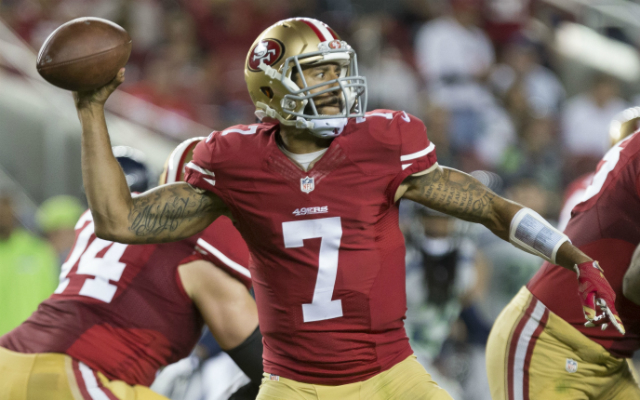
5. San Francisco 49ers
Projected salary cap room: $50.216 million
On the surface, it appears as if quarterback Colin Kaepernick would be a good fit in new head coach Chip Kelly's offense. It remains to be seen whether Kaepernick is given a fresh start under Kelly or dealt before his $11.9 million base salary for 2016 becomes fully guaranteed on April 1. The 49ers would pick up almost $8.5 million of cap room from a Kaepernick trade. Blaine Gabbert, who started the final eight games after Kaepernick was benched and subsequently shelved with an injury to his non-throwing shoulder, is under contract for the 2016 season.
The offensive line needs to be addressed in a significant way regardless of the quarterback situation. Guard Alex Boone, who is one of San Francisco's seven UFAs, may be looking for greener pastures. His 2014 contract renegotiation prohibits the 49ers from using a franchise or transition tag on him.
Right tackle Anthony Davis coming out of retirement would be a big help. If he doesn't, Schwartz, a Cal-Berkeley alum, could be a free agent priority. Osemele and the Texans' Brandon Brooks would be high-end guard options.
Anquan Boldin, 35, had his 2016 through 2018 contract years void on Feb. 12. The 49ers have a $2.727 million cap charge from the bonus proration associated with these contract years. Matthews, who is nine years younger than Boldin, might find the 49ers intriguing if a commitment is made to Kaepernick before the start of free agency. They played together at the University of Nevada.
Tight end is an issue because Vance McDonald doesn't appear to be Vernon Davis' successor. Kelly's offense in Philadelphia was tight end friendly. Stanford product Cody Fleener is available but will probably try to top the five-year, $42.5 million extension (worth a maximum of $45.8 million through performance bonuses) college teammate Zach Ertz received from the Eagles.
There has been a mass exodus at cornerback over the last couple of years. If 49ers don't want to pay for a high-end free agent cover man, the next tier (Casey Hayward, Patrick Robinson, etc.) could command money similar to what Chris Culliver took to leave the 49ers for the Washington Redskins last year, which was $8 million per year with $16 million guaranteed. Nose tackle Ian Williams is the biggest re-signing priority on defense. Kicker Phil Dawson, 41, could also return for less than the $3.134 million he made in 2015.
Joel Corry is a former sports agent who helped found Premier Sports & Entertainment, a sports management firm that represents professional athletes and coaches. Before his tenure at Premier, Joel worked for Management Plus Enterprises, which represented Shaquille O'Neal, Hakeem Olajuwon and Ronnie Lott.
You can follow him on Twitter: @corryjoel | You can email him at jccorry@gmail.com






